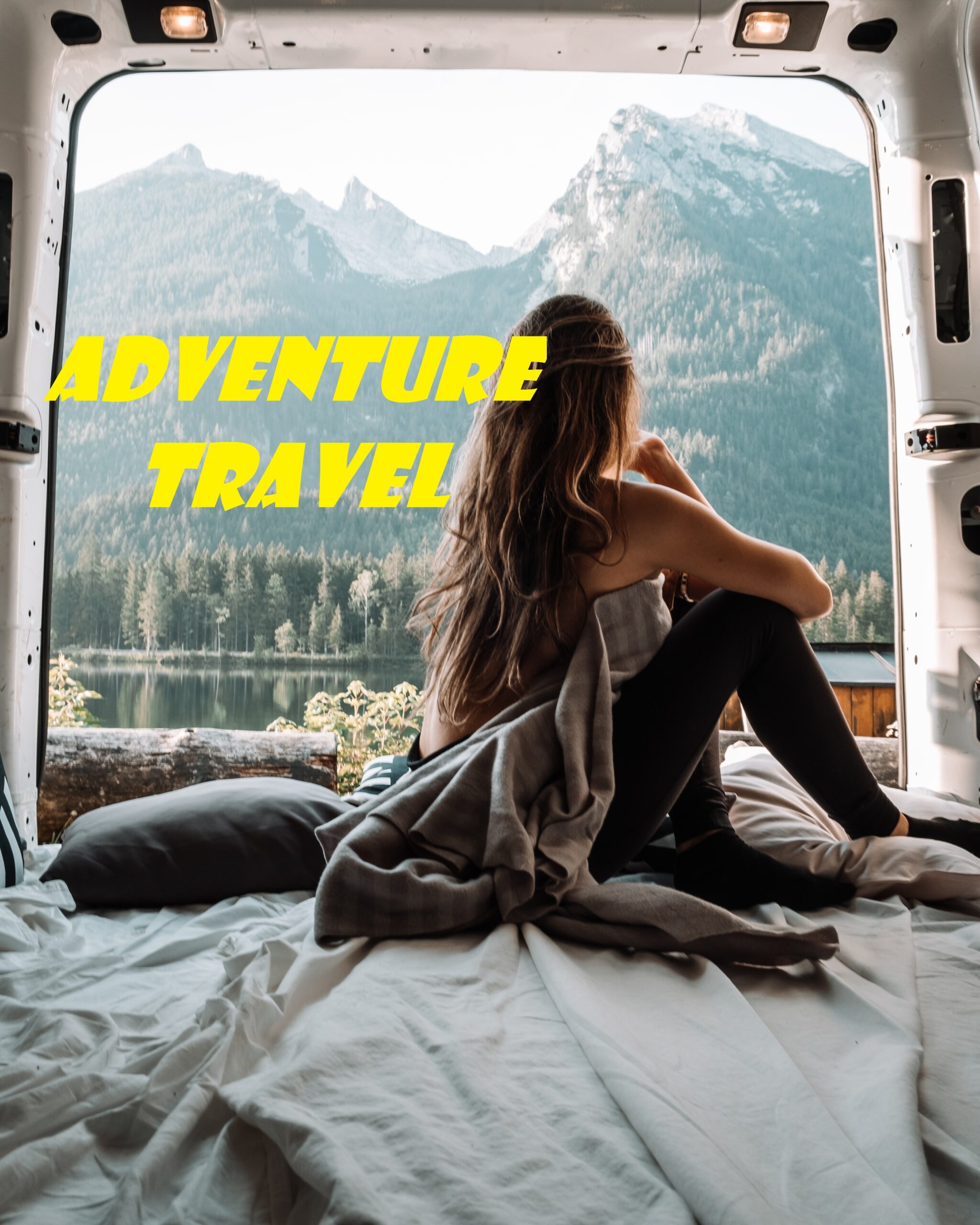Enjoyable Adventure Travel, Essential Guide
***freeDIGIBOOK***Where to Store Your Passport While Traveling
Chapter 1: Choosing Your Destination
Research different adventure destinations and determine what type of activities you want to do
Consider factors such as budget, season, and level of difficulty
Make a list of potential destinations and narrow it down based on your preferences
Choosing the right destination is crucial to planning a successful adventure travel experience. Whether you’re looking to hike through the mountains, scuba dive in the ocean, or explore a new city, it’s important to research your options and choose a destination that fits your interests, budget, and level of experience.
Research Different Adventure Destinations:
Start by researching different adventure destinations that offer the types of activities you want to do. You can look online for blogs, travel websites, and forums that provide recommendations and reviews from other travelers. Make a list of potential destinations that interest you and take note of the activities that are available in each location.
Consider Factors Such as Budget, Season, and Level of Difficulty:
As you narrow down your list of potential destinations, consider factors such as your budget, the season you’ll be traveling in, and your level of experience. Some adventure destinations may be more expensive than others, while some may only offer certain activities during certain times of the year. You’ll also want to consider the level of difficulty of the activities you want to do and make sure you’re physically prepared for the challenge.
Make a List of Potential Destinations and Narrow it Down Based on Your Preferences:
Once you’ve done your research and considered the factors above, make a list of potential destinations and narrow it down based on your preferences. You may want to consider factors such as the culture, language, and food of each destination, as well as the availability of accommodations and transportation options. By taking all of these factors into account, you can choose a destination that will provide the best adventure travel experience for you.
In summary, choosing the right destination is an important part of planning your adventure travel experience. By researching different destinations, considering factors such as budget and level of difficulty, and making a list of potential destinations based on your preferences, you can choose a destination that offers the activities and experiences you’re looking for.
Chapter 2: Creating a Budget
Determine how much you can afford to spend on your trip.
Consider all expenses, including transportation, accommodation, food, and activities.
Allocate funds for unexpected expenses and emergencies.
Creating a budget is an important step in planning any trip, including adventure travel. It helps you keep track of your expenses, stay within your means, and ensure that you have enough money to cover all the activities and experiences you want to have.
Here are some tips for creating a budget for your adventure travel:
Determine How Much You Can Afford to Spend on Your Trip:
Start by taking a look at your finances and figuring out how much money you can realistically afford to spend on your trip. Take into account any other financial obligations you have, such as bills, rent, and loans. Be honest with yourself about what you can afford and don’t overspend.
Consider All Expenses, Including Transportation, Accommodation, Food, and Activities:
Once you have an idea of how much you can afford to spend, it’s time to consider all the expenses associated with your trip. This includes transportation costs, such as flights or rental cars, accommodation costs, such as hotels or vacation rentals, food and drink expenses, and costs associated with activities and excursions. Don’t forget to factor in other expenses, such as travel insurance and visa fees if necessary.
Allocate Funds for Unexpected Expenses and Emergencies:
No matter how well you plan, unexpected expenses can arise during your trip. It’s a good idea to set aside some extra funds for emergencies, such as unexpected medical expenses or lost luggage. This can help you avoid financial stress and ensure that you’re prepared for anything that comes your way.
Track Your Expenses:
Once you’ve created a budget, it’s important to track your expenses as you travel. This will help you stay within your budget and avoid overspending. You can use a spreadsheet or an app to keep track of your expenses, and make adjustments as necessary.
In summary, creating a budget is an important part of planning your adventure travel experience. By determining how much you can afford to spend, considering all expenses, allocating funds for unexpected expenses and emergencies, and tracking your expenses, you can ensure that you have a successful and stress-free trip.
Chapter 3: Packing for Adventure
Make a list of essential gear and equipment based on the activities you plan to do.
Research the weather and climate of your destination and pack accordingly
Consider the weight and size of your luggage, as well as any restrictions on the mode of transportation you’ll be using.
Packing for adventure travel can be challenging, as you’ll need to bring gear and equipment that is specific to the activities you plan to do.
Here are some tips to help you pack effectively for your adventure travel:
Make a List of Essential Gear and Equipment Based on the Activities You Plan to Do:
Start by making a list of the activities you plan to do during your trip, and the gear and equipment that you’ll need for each activity. This may include hiking boots, a tent, a backpack, a snorkel and mask, or a climbing harness, depending on your chosen activities. Prioritize the items that are essential to your trip and try to limit unnecessary items to save space and weight.
Research the Weather and Climate of Your Destination and Pack Accordingly:
The weather and climate of your destination can have a big impact on what you need to pack. Research the average temperatures, rainfall, and weather patterns of your destination and pack accordingly. Bring layers if the weather is unpredictable, and clothing that is appropriate for the activities you plan to do.
Consider the Weight and Size of Your Luggage, as well as Any Restrictions on the Mode of Transportation You’ll Be Using:
When packing for adventure travel, it’s important to consider the weight and size of your luggage, as well as any restrictions on the mode of transportation you’ll be using. Check the weight and size limits of your luggage, and be mindful of any weight restrictions on flights, trains, or buses. Also, consider the size and weight of your gear and equipment, and try to pack in a way that maximizes space and minimizes weight.
Pack Smart and Efficiently:
To make the most of the space in your luggage, try packing smart and efficiently. Roll your clothes instead of folding them, and use packing cubes or compression bags to save space. Put small items, such as socks and underwear, in shoes or other empty spaces in your luggage. Additionally, consider bringing items that serve multiple purposes, such as a lightweight jacket that can be used as a pillow.
In summary, packing for adventure travel requires careful planning and consideration of the gear and equipment you’ll need for your chosen activities. By making a list of essential items, researching the weather and climate, considering luggage restrictions, and packing smartly and efficiently, you can ensure that you have everything you need for a successful and enjoyable trip.
Chapter 4: Booking Your Accommodation
Research and book your accommodation based on your budget and preferences.
Consider factors such as location, amenities, and reviews from other travelers.
Book in advance to ensure availability, especially during peak travel seasons.
Booking the right accommodation is an important part of planning your adventure travel experience. Your accommodation will serve as your home base during your trip, and it’s important to choose a place that fits your budget, preferences, and needs.
Here are some tips for booking your accommodation:
Research and Book Your Accommodation Based on Your Budget and Preferences:
Start by researching different types of accommodation that are available in your destination, such as hotels, vacation rentals, hostels, or camping sites. Consider your budget and preferences, such as the level of comfort you require, the amenities you need, and the type of experience you want to have. For example, if you’re looking for a more authentic experience, you may want to consider staying in a homestay or a local guesthouse.
Consider Factors Such as Location, Amenities, and Reviews from Other Travelers:
As you narrow down your options, consider factors such as the location of the accommodation, the amenities that are available, and the reviews from other travelers. You may want to stay close to the activities you plan to do, or in an area with easy access to public transportation. Look for amenities that are important to you, such as free Wi-Fi, breakfast, or a swimming pool. Check online reviews from other travelers to get a sense of what the accommodation is really like.
Book in Advance to Ensure Availability, Especially During Peak Travel Seasons:
Once you’ve found the right accommodation, it’s important to book in advance to ensure availability, especially during peak travel seasons. Many popular adventure travel destinations book up quickly, and you don’t want to miss out on your preferred accommodation. Book your accommodation as soon as possible to avoid disappointment.
In summary, booking the right accommodation is an important part of planning your adventure travel experience. By researching and booking your accommodation based on your budget and preferences, considering factors such as location and amenities, and booking in advance to ensure availability, you can ensure that you have a comfortable and enjoyable place to stay during your trip.
Chapter 5: Transportation Options
Research transportation options for getting to and from your destination.
Consider factors such as cost, convenience, and time constraints.
Determine whether you’ll need to rent a car or use public transportation during your trip.
Chapter 6: Planning Your Activities
Research and book activities based on your interests and budget.
Consider factors such as level of difficulty, duration, and safety.
Make a schedule or itinerary to ensure you have enough time to do everything you want to do.
Planning your activities is an important part of adventure travel. Researching and booking activities that align with your interests and budget, considering factors such as level of difficulty, duration, and safety, and making a schedule or itinerary to ensure you have enough time to do everything you want to do are all essential steps in planning a successful adventure travel experience.
Here are some tips for planning your activities:
Research and Book Activities Based on Your Interests and Budget:
Start by researching different activities that are available in your destination. Consider your interests and budget when choosing activities. You may want to try activities such as hiking, kayaking, snorkeling, or zip-lining. Look for activities that offer a unique experience and align with your goals for the trip.
Consider Factors Such as Level of Difficulty, Duration, and Safety:
As you narrow down your options, consider factors such as the level of difficulty, duration, and safety of each activity. Make sure you are physically prepared for the activities you choose, and understand the risks involved. Look for reputable operators and tour companies that prioritize safety and provide adequate training and equipment.
Make a Schedule or Itinerary:
Once you’ve chosen your activities, make a schedule or itinerary to ensure you have enough time to do everything you want to do. Consider the duration of each activity, as well as transportation time and any necessary rest periods. Make sure to allow enough time for unexpected delays or changes in plans.
Be Flexible:
While it’s important to have a schedule or itinerary, it’s also important to be flexible. Don’t over-schedule your trip, and allow for downtime to relax and explore at your own pace. Be open to trying new activities or changing your plans if necessary.
In summary, planning your activities is an essential part of adventure travel. By researching and booking activities based on your interests and budget, considering factors such as level of difficulty, duration, and safety, making a schedule or itinerary, and being flexible, you can ensure that you have a fun and enjoyable adventure travel experience.
Chapter 7: Staying Safe and Healthy
Research potential health and safety risks at your destination and take appropriate precautions.
Purchase travel insurance to cover unexpected medical emergencies or trip cancellations.
Pack a first-aid kit and any necessary medications.
Staying safe and healthy is essential when it comes to adventure travel. It’s important to research potential health and safety risks at your destination and take appropriate precautions, purchase travel insurance to cover unexpected medical emergencies or trip cancellations, and pack a first-aid kit and any necessary medications.
Here are some tips for staying safe and healthy during your adventure travel:
Research Potential Health and Safety Risks at Your Destination and Take Appropriate Precautions:
Before you travel, research potential health and safety risks at your destination. This may include things like natural disasters, political unrest, crime, or disease outbreaks. Take appropriate precautions to minimize these risks, such as avoiding certain areas, following local laws and customs, and getting necessary vaccinations.
Purchase Travel Insurance to Cover Unexpected Medical Emergencies or Trip Cancellations:
Travel insurance is essential for any adventure travel experience. It can cover unexpected medical emergencies, trip cancellations, and other unforeseen circumstances. Purchase travel insurance that covers the specific activities you plan to do and make sure you understand the terms and conditions of the policy.
Pack a First-Aid Kit and Any Necessary Medications:
Pack a first-aid kit that includes essential items such as bandages, antiseptic, and pain relievers. Also, bring any necessary medications that you need for pre-existing conditions or allergies. Make sure to pack these items in your carry-on luggage in case your checked luggage gets lost.
Practice Good Hygiene and Stay Safe During Activities:
Practice good hygiene during your trip, such as washing your hands regularly and avoiding unclean food and water. When engaging in adventure activities, make sure to follow safety guidelines and use proper equipment. This may include wearing a helmet when cycling or using a safety harness when rock climbing.
In summary, staying safe and healthy is an important part of planning your adventure travel experience. By researching potential health and safety risks at your destination and taking appropriate precautions, purchasing travel insurance to cover unexpected medical emergencies or trip cancellations, packing a first-aid kit and any necessary medications, and practicing good hygiene and safety during activities, you can ensure that you have a safe and enjoyable trip.
Chapter 8: Managing Your Finances
Notify your bank and credit card companies of your travel plans to avoid any issues with accessing funds.
Keep track of your expenses and stick to your budget.
Consider using a travel rewards credit card to earn points or miles for future trips.
Managing your finances is an important part of adventure travel. You need to ensure that you have enough money to cover all your expenses, including transportation, accommodation, food, activities, and unexpected expenses.
Here are some tips for managing your finances during your adventure travel:
Notify Your Bank and Credit Card Companies of Your Travel Plans:
Before you leave for your trip, it’s important to notify your bank and credit card companies of your travel plans. This helps prevent any issues with accessing your funds while you’re away. Your bank may freeze your account if they see unusual activity, such as transactions in a foreign country.
Keep Track of Your Expenses and Stick to Your Budget:
Keeping track of your expenses is important to ensure that you stay within your budget. Consider using a budgeting app or spreadsheet to keep track of your spending. Make sure to include all expenses, including transportation, accommodation, food, activities, and unexpected expenses. Sticking to your budget will help you avoid financial stress and ensure that you have enough money for the activities and experiences you want to have.
Consider Using a Travel Rewards Credit Card:
Using a travel rewards credit card can help you earn points or miles for future trips. Look for a card that offers rewards for the types of expenses you’re likely to incur during your trip, such as travel, dining, or hotel stays. Make sure to pay off your balance in full each month to avoid paying interest and fees.
Be Prepared for Unexpected Expenses:
Even with careful planning, unexpected expenses can arise during your trip. Make sure to set aside some extra funds for emergencies, such as unexpected medical expenses or lost luggage. This can help you avoid financial stress and ensure that you’re prepared for anything that comes your way.
In summary, managing your finances is an important part of adventure travel. By notifying your bank and credit card companies of your travel plans, keeping track of your expenses and sticking to your budget, considering using a travel rewards credit card, and being prepared for unexpected expenses, you can ensure that you have a successful and stress-free adventure travel experience.
Chapter 9: Communicating with Others
Inform friends and family of your travel plans and itinerary.
Check in regularly to let them know you’re safe.
Consider using a communication app or device if traveling in remote areas without cell service.
Staying in communication with friends and family during your adventure travel is important for your safety and peace of mind. It’s essential to inform them of your travel plans and itinerary, check in regularly to let them know you’re safe, and consider using a communication app or device if traveling in remote areas without cell service.
Here are some tips for communicating with others during your adventure travel:
Inform Friends and Family of Your Travel Plans and Itinerary:
Before you leave for your trip, inform your friends and family of your travel plans and itinerary. Provide them with a copy of your itinerary, including information about your accommodation, transportation, and activities. Make sure they know how to contact you in case of an emergency.
Check in Regularly to Let Them Know You’re Safe:
While you’re on your trip, make sure to check in regularly with your friends and family to let them know you’re safe. This can be as simple as sending a quick message or making a quick phone call. If you’ll be traveling in remote areas without cell service, make sure to let them know when you expect to be back in an area with cell service.
Consider Using a Communication App or Device:
If you’ll be traveling in remote areas without cell service, consider using a communication app or device. This can include satellite phones, radios, or GPS devices that allow you to send and receive messages even without cell service. Make sure to familiarize yourself with the device and test it out before you leave.
Be Mindful of Time Zones:
If you’re traveling to a different time zone, make sure to be mindful of the time difference when communicating with friends and family. Consider setting up a regular check-in time that works for both parties.
In summary, communicating with others during your adventure travel is important for your safety and peace of mind. By informing friends and family of your travel plans and itinerary, checking in regularly to let them know you’re safe, considering using a communication app or device if traveling in remote areas without cell service, and being mindful of time zones, you can ensure that you have a successful and enjoyable adventure travel experience.
Chapter 10: Enjoying Your Adventure
Stay flexible and open to new experiences.
Take time to relax and enjoy the moment.
Keep a travel journal or take photos to document your adventure.
After all the planning and preparation, it’s time to enjoy your adventure travel experience. To make the most of your trip, it’s important to stay flexible and open to new experiences, take time to relax and enjoy the moment, and keep a travel journal or take photos to document your adventure. Here are some tips for enjoying your adventure:
Stay Flexible and Open to New Experiences:
While it’s important to have a schedule or itinerary, it’s also important to stay flexible and open to new experiences. Be open to trying new foods, meeting new people, and exploring new places. Some of the best adventures can happen when you step out of your comfort zone and try something new.
Take Time to Relax and Enjoy the Moment:
While adventure travel can be exciting and action-packed, it’s important to take time to relax and enjoy the moment. Whether it’s taking a break on a scenic hike, enjoying a local meal, or watching a beautiful sunset, take time to appreciate the experiences you’re having and the places you’re visiting.
Keep a Travel Journal or Take Photos to Document Your Adventure:
Keeping a travel journal or taking photos is a great way to document your adventure and preserve your memories. Write down your thoughts, feelings, and experiences in a journal or take photos to capture the beauty of the places you visit. This will allow you to relive your adventure long after it’s over.
Embrace the Unexpected:
Even with careful planning, unexpected things can happen during your adventure travel. Embrace the unexpected and try to see it as part of the adventure. Some of the best memories can come from unexpected experiences and challenges.
In summary, enjoying your adventure travel experience is all about staying flexible, taking time to relax and enjoy the moment, documenting your adventure, and embracing the unexpected. By keeping these tips in mind, you can ensure that you have a successful and enjoyable adventure travel experience.





One thought on “Enjoyable Travel Adventure, Essential Tips”
Comments are closed.